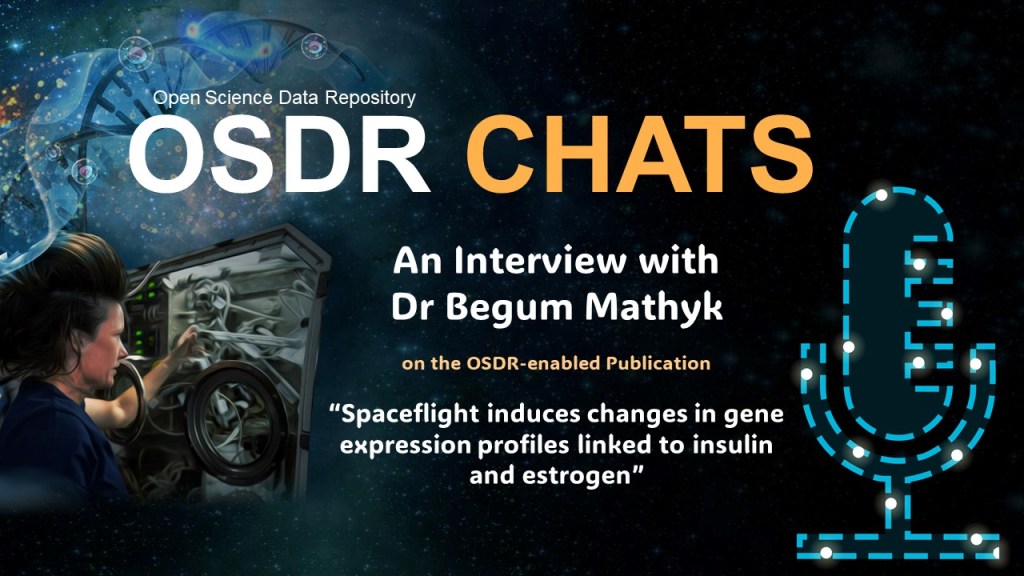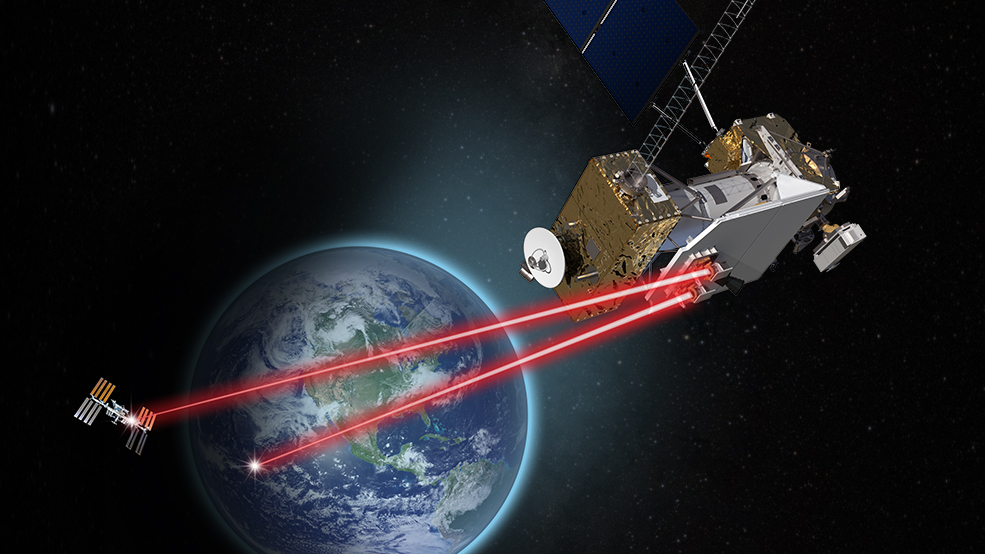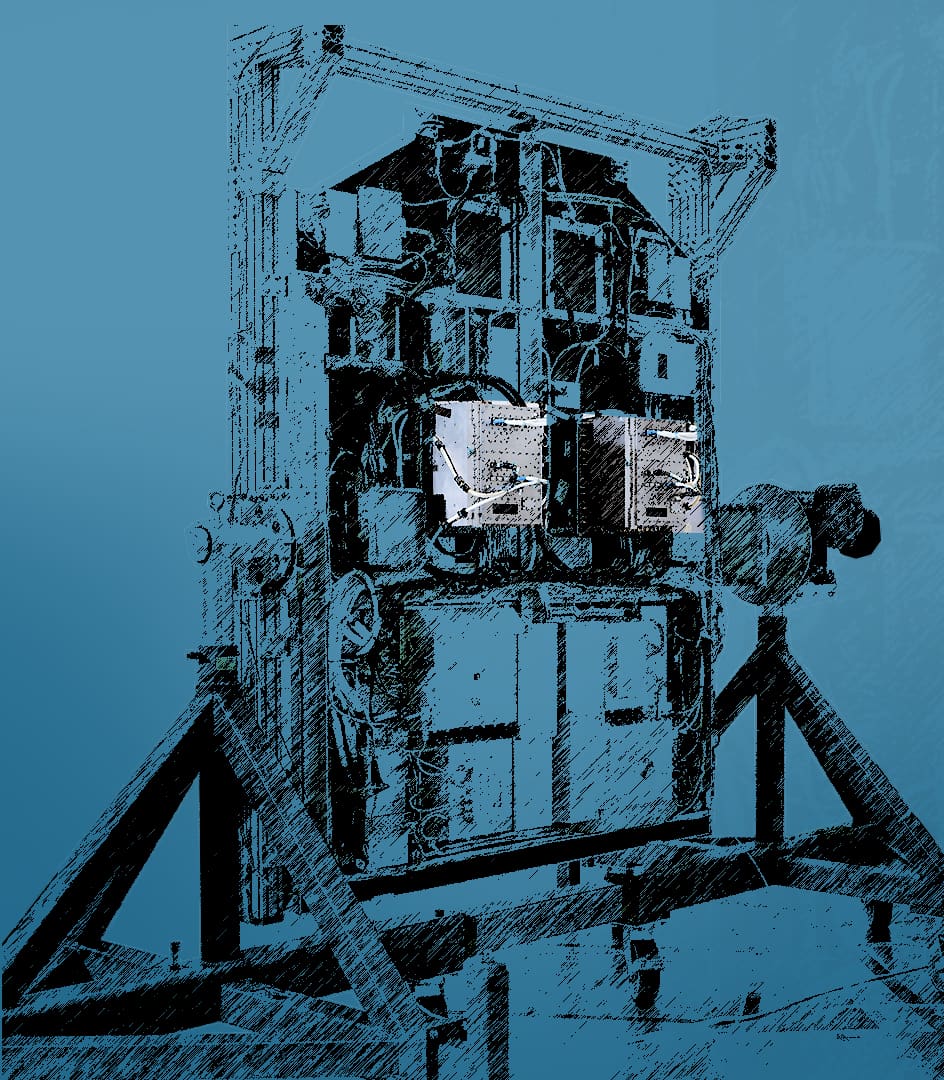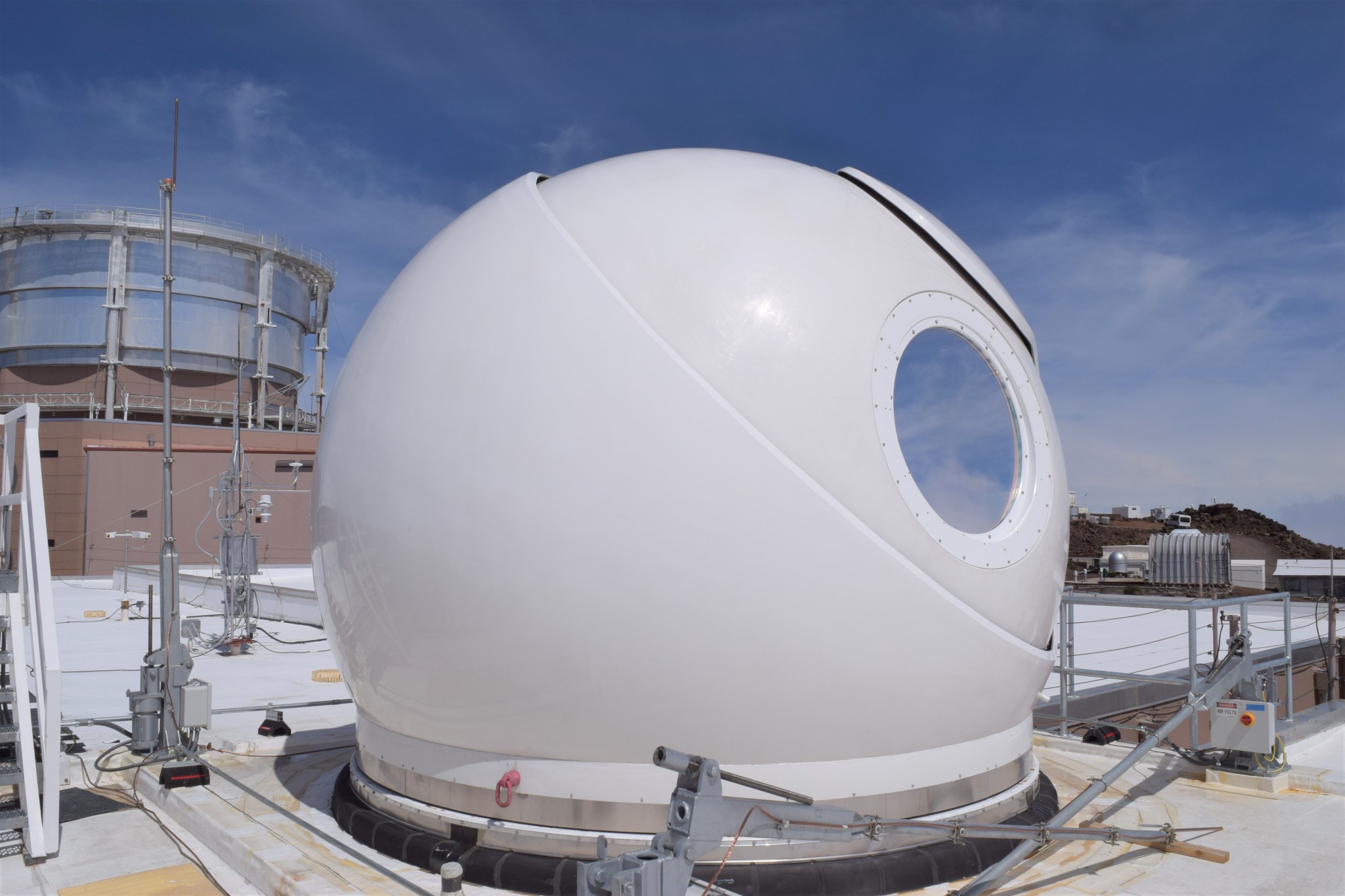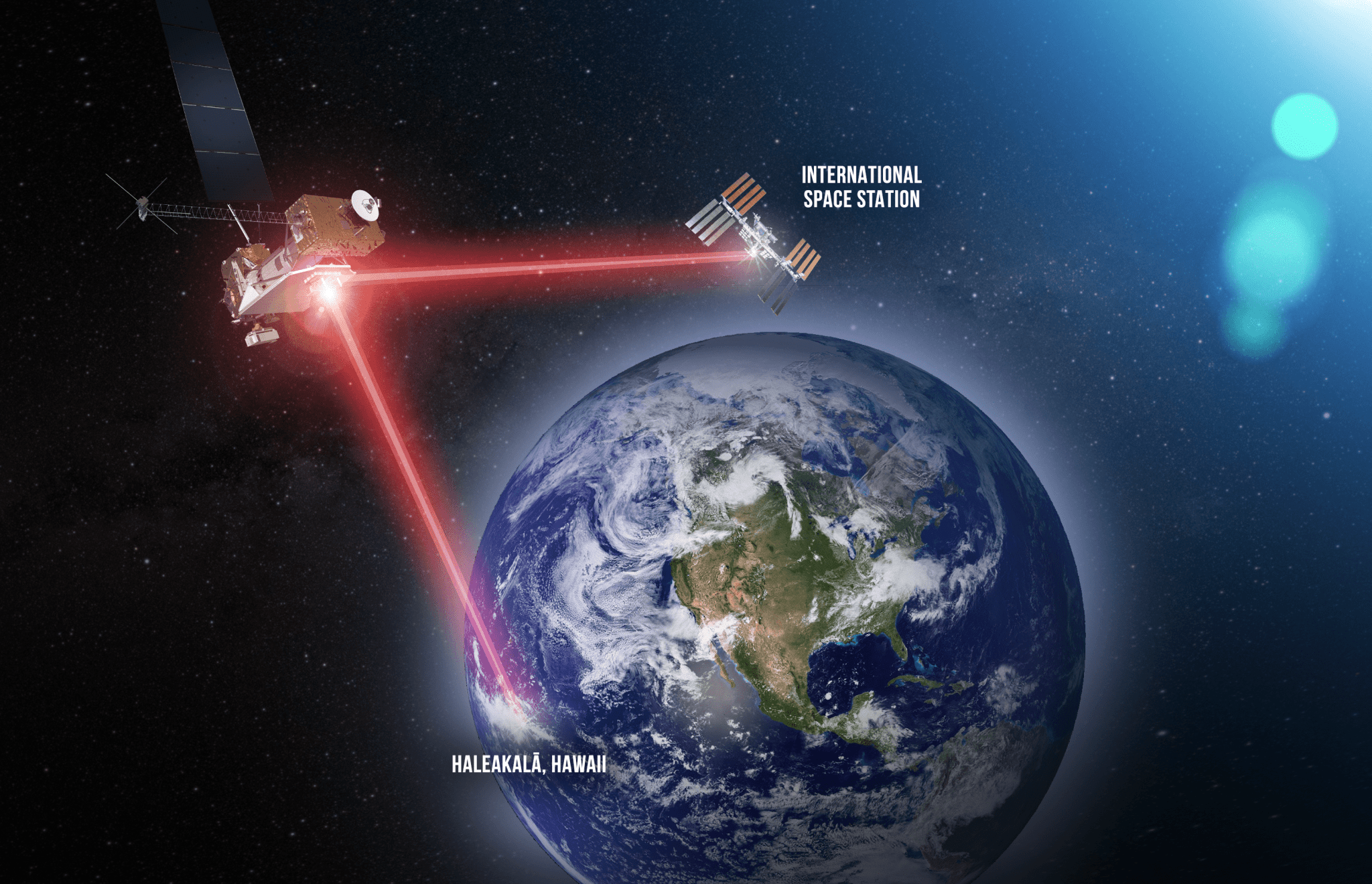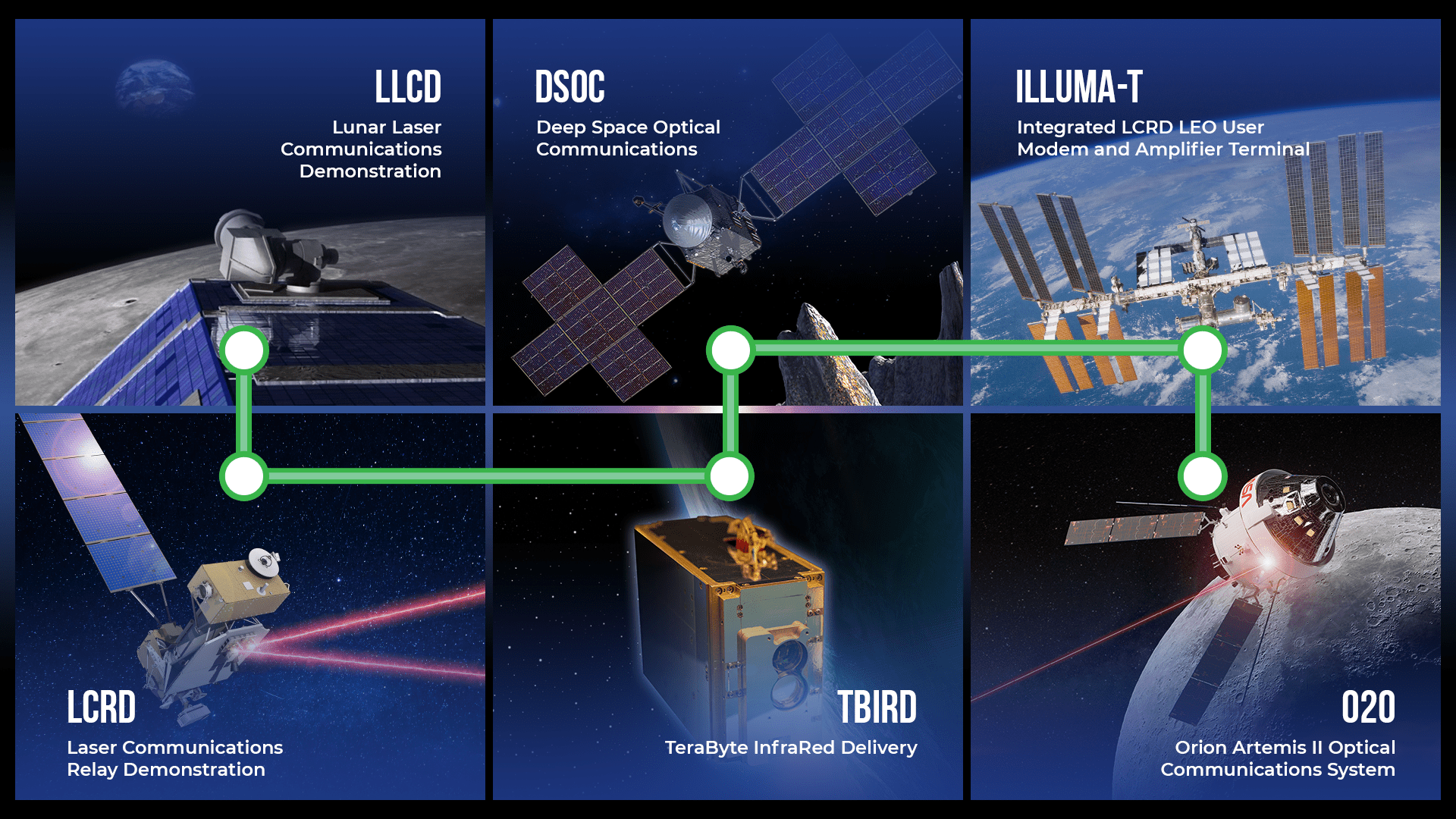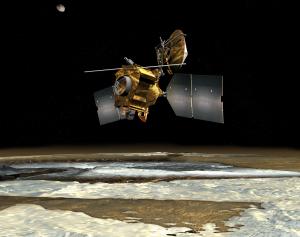6 Things You need to Know about LCRD
Lee esta historia en español aquí.
NASA’s Laser Communications Relay Demonstration (LCRD) will use laser communications systems to transmit data from space to Earth. Below are six things you need to know about NASA’s revolutionary LCRD mission.
1. Laser communications will transform how NASA gets info to and from space.
Since the dawn of space exploration, NASA has used radio frequency systems to communicate with astronauts and spacecraft. However, as space missions generate and collect more data, the need for enhanced communications capabilities increases. LCRD leverages the power of laser communications, which uses infrared light rather than radio waves, to encode and transmit information to and from Earth.
Both radio waves and laser infrared light waves are forms of electromagnetic radiation with wavelengths at different points on the spectrum. Missions encode their scientific data onto the electromagnetic signals to send back to Earth.
The infrared light used for laser communications differs from radio waves because it occurs at a much higher frequency, allowing engineers to pack more data into each transmission. More data yields more information and discoveries about space at once.
Using infrared lasers, LCRD will send data to Earth from geosynchronous orbit at 1.2 gigabits-per-second (Gbps). At this speed and distance, you could download a movie in under a minute.
2. Laser communications will let spacecraft send home more data in a single downlink.
If you were alive in the late ’80s and early ’90s, you’ll remember the dial-up speeds of the terrestrial internet – slow and painful. The addition of laser communications to spacecraft is similar to humanity’s use of high-speed internet with technologies like fiber optic networking: revolutionary.
Our home internet connections these days allow high-definition videos, shows, and content to reach our screens almost instantaneously. This is, in part, due to the fiber optic connections sending laser light densely packed with data through plastic or glass cables, creating a faster user experience.
This same concept – minus the fiber cables – is applied to space-based laser communications, which allows spacecraft to send high-resolution images and videos over laser links.
With laser communications in place, spacecraft can send back more data at once in a single download. NASA and the aerospace industry are taking advantage of these new developments and creating more missions that use lasers to complement radio frequency satellites.
3. LCRD has two optical modules for sending and receiving laser signals.
LCRD is a relay satellite with many highly sensitive components that provide increased communications. As a relay, LCRD removes the need for user missions to have direct line-of-sight to antennas on Earth. LCRD has two optical terminals – one terminal receives data from a user spacecraft, while the other transmits data to ground stations on Earth.
LCRD’s modems translate digital data into laser signals, which are then transmitted via encoded beams of light, invisible to the human eye, by the relay’s optical modules. LCRD can both send and receive data, creating a continuous path for flowing mission data to-and-from space. Together, these capabilities make LCRD NASA’s first two-way, end-to-end optical relay.
These are just some of the components that make up the LCRD payload, which all together is the size of a king mattress.
4. LCRD uses two ground stations in California and Hawaii
Once LCRD receives information and encodes it, the payload sends the data to ground stations on Earth that are each equipped with telescopes to receive the light and modems to translate the encoded light back into digital data.
LCRD’s ground stations are known as Optical Ground Stations (OGS) -1 and -2, and are located on Table Mountain in Southern California, and on Haleakalā Volcano in Maui, Hawaii.
While laser communications can provide increased data transfer rates, atmospheric disturbances – such as clouds and turbulence – can interfere with laser signals as they travel through Earth’s atmosphere.
The locations for OGS-1 and OSG-2 were chosen for their clear weather conditions and remote, high-altitude locations. Most of the weather occurring in those areas takes place below the summit of the mountains, leaving relatively clear skies perfect for laser communications.
5. LCRD allows the aerospace community to test and refine laser communications.
LCRD will prove the viability of laser communications systems from geosynchronous orbit – about 22,000 miles above Earth’s surface.
Prior to supporting other missions, LCRD will spend two years conducting tests and experiments. During this time, OGS-1 and OGS-2 will act as “missions,” sending data from one station to LCRD then down to the other.
LCRD will test laser functionality with experiments from NASA, other government agencies, academia, and commercial companies. Some of these experiments include studying atmospheric disturbances on laser signals and demonstrating reliable relay service operations.
These tests will allow the aerospace community to learn from LCRD and further refine the technology for future implementation. NASA is providing these opportunities to grow the body of knowledge surrounding laser communications and promote its operational use.
After its experimental phase, LCRD will support in-space missions, including an optical terminal that will be installed on the International Space Station. This terminal will collect data from science experiments onboard and then transmit the information to LCRD to be relayed to Earth.
6. LCRD is one of many exciting laser communications missions.
LCRD is NASA’s first-ever laser communications relay system. However, there are many missions in development that will demonstrate and test additional laser communications capabilities.
- The TeraByte InfraRed Delivery (TBIRD) payload will demonstrate laser downlinks at 200 Gbps – NASA’s highest optical data rate. TBIRD offers an opportunity to test direct-to-Earth optical communications on a small satellite in low
- LCRD’s first user will be the Integrated LCRD Low Earth Orbit User Modem and Amplifier Terminal (ILLUMA-T) aboard the space station. ILLUMA-T will complete NASA’s first end-to-end laser system and showcase the benefits laser can provide to astronauts and experiments.
- The Orion Artemis II Optical Communications System (O2O) terminal will enable an ultra-high-definition video feed over infrared light between Earth and Artemis II astronauts journeying around the Moon.
- In 2026, the Psyche mission will reach its destination – an asteroid over 150 million miles away from Earth. Psyche will carry the Deep Space Optical Communication (DSOC) payload to test laser communications against the distinctive challenges presented by deep space exploration.
All of these missions will help the aerospace community standardize laser communications for implementation on future missions. With lasers lighting the way, NASA can glean more information from space than ever before.
LCRD is a NASA payload aboard the Department of Defense’s Space Test Program Satellite-6 (STPSat-6). STPSat-6, part of the Space Test Program 3 (STP-3) mission, will launch on a United Launch Alliance Atlas V 551 rocket from the Cape Canaveral Space Force Station in Florida. STP is operated by the United States Space Force’s Space Systems Command.
LCRD is led by Goddard and in partnership with NASA’s Jet Propulsion Laboratory in Southern California and the MIT Lincoln Laboratory. LCRD is funded through NASA’s Technology Demonstration Missions program, part of the Space Technology Mission Directorate, and the Space Communications and Navigation (SCaN) program at NASA Headquarters.














